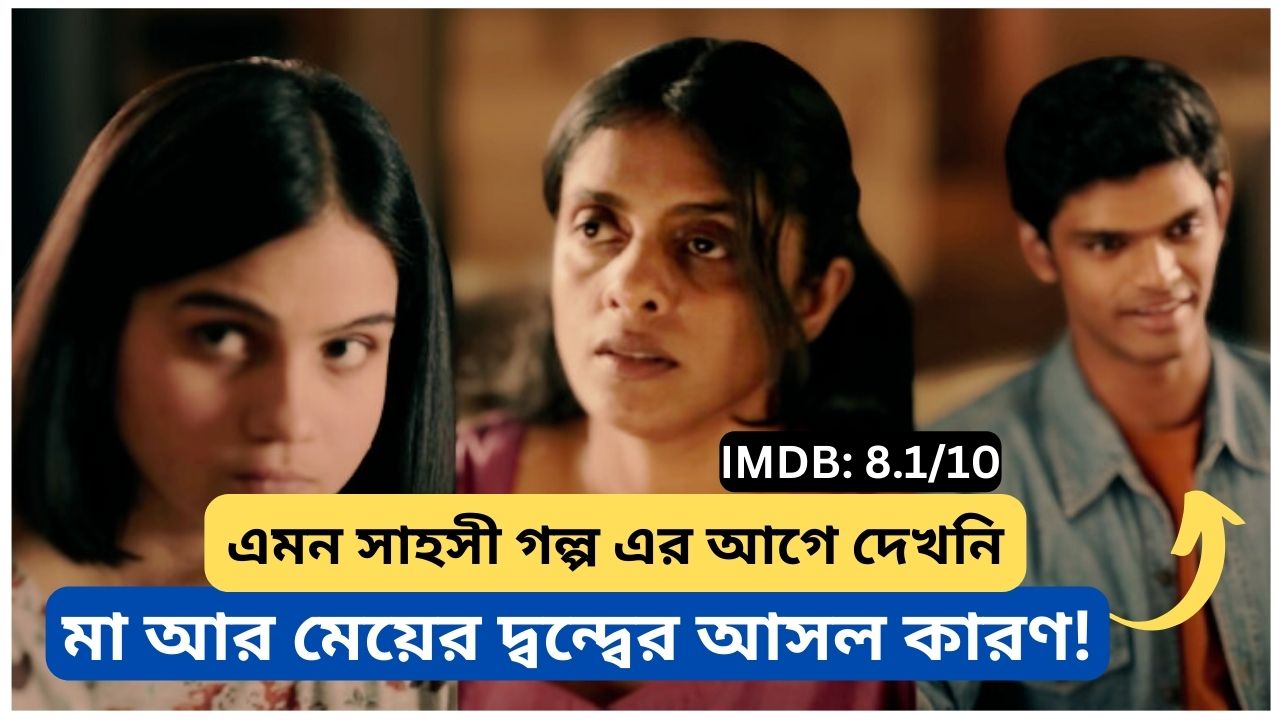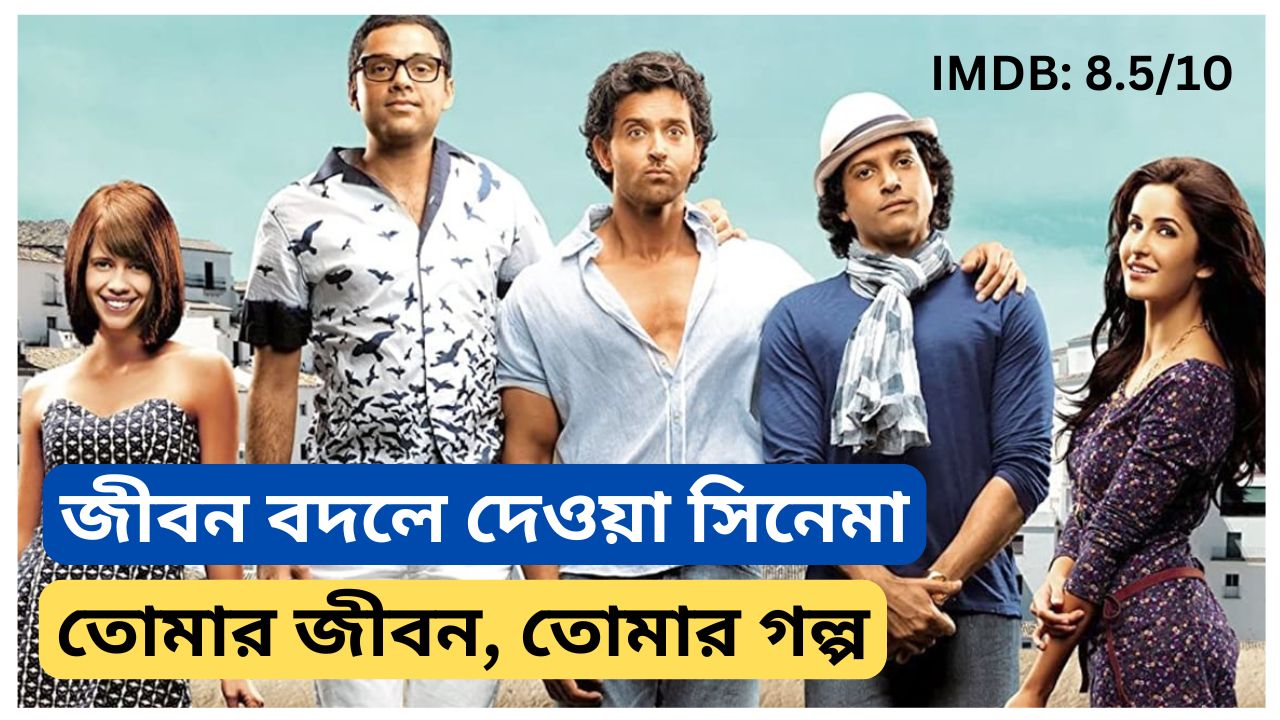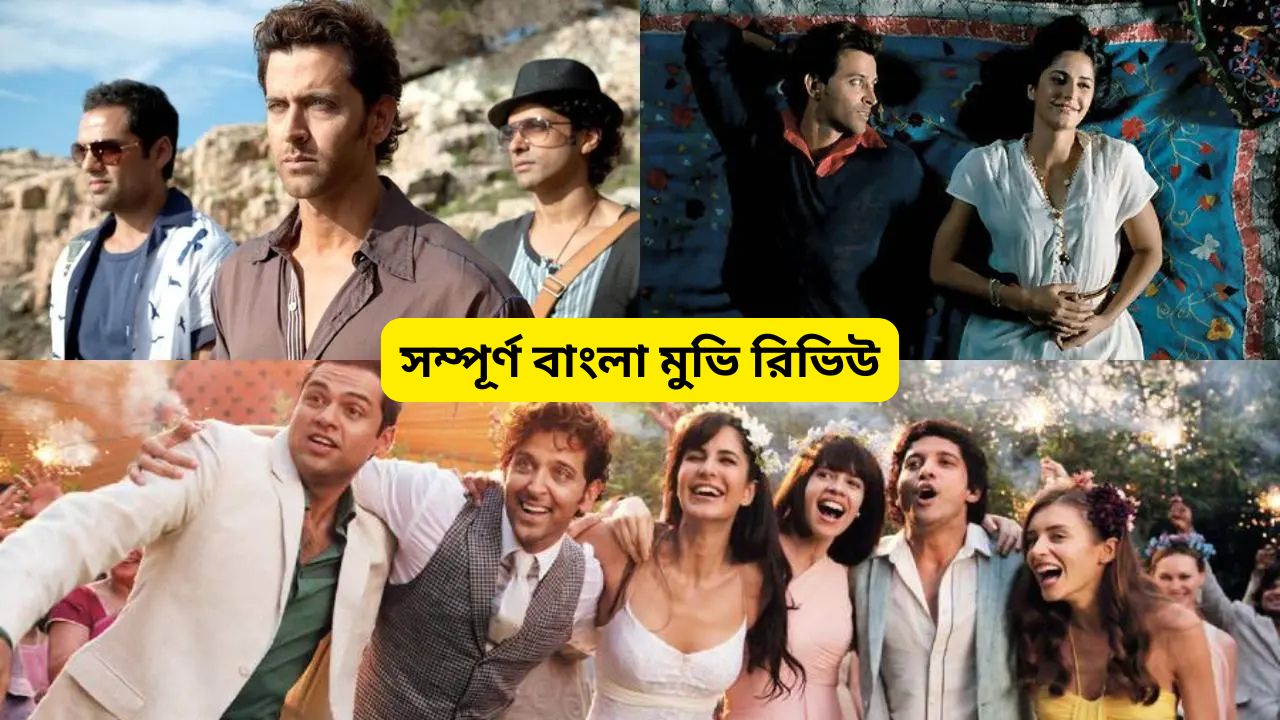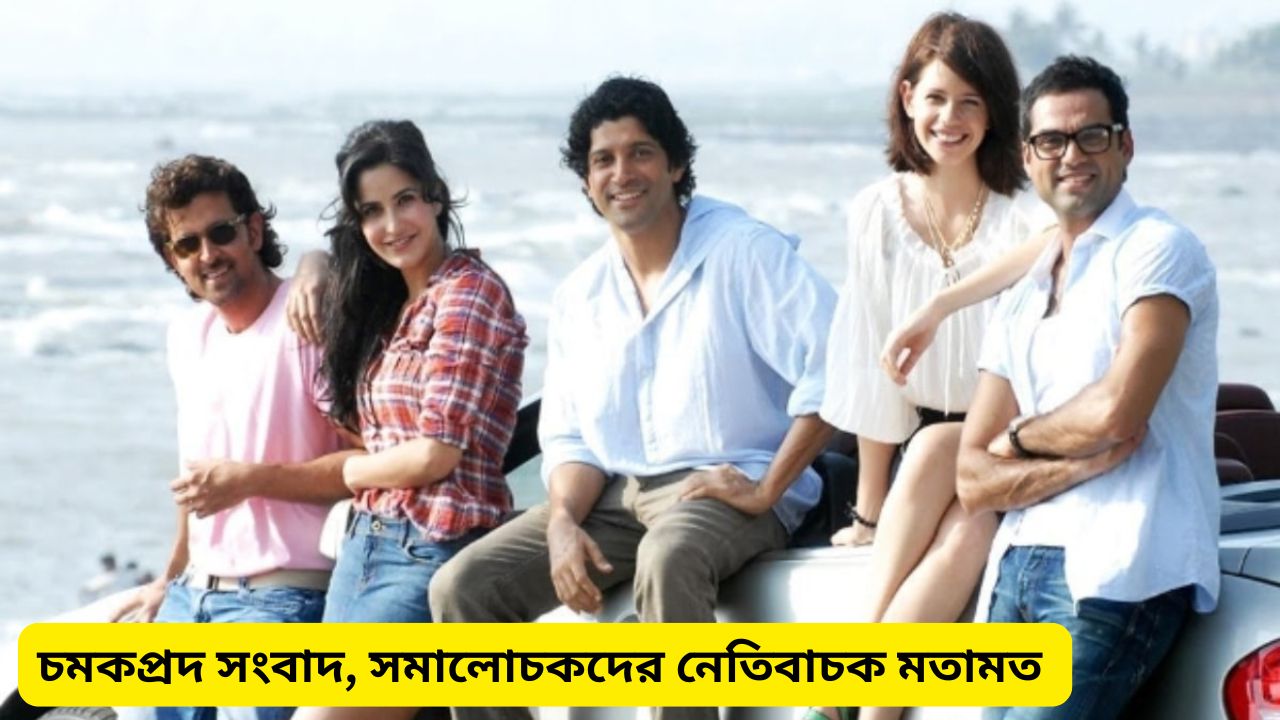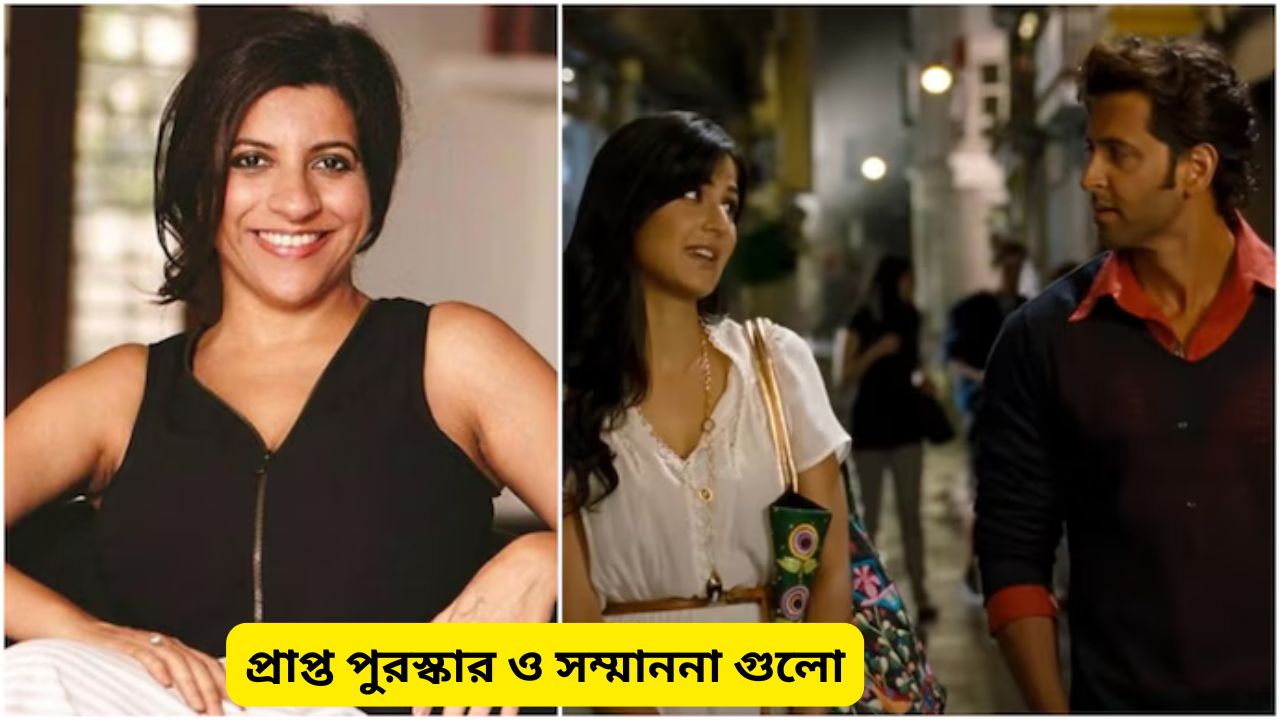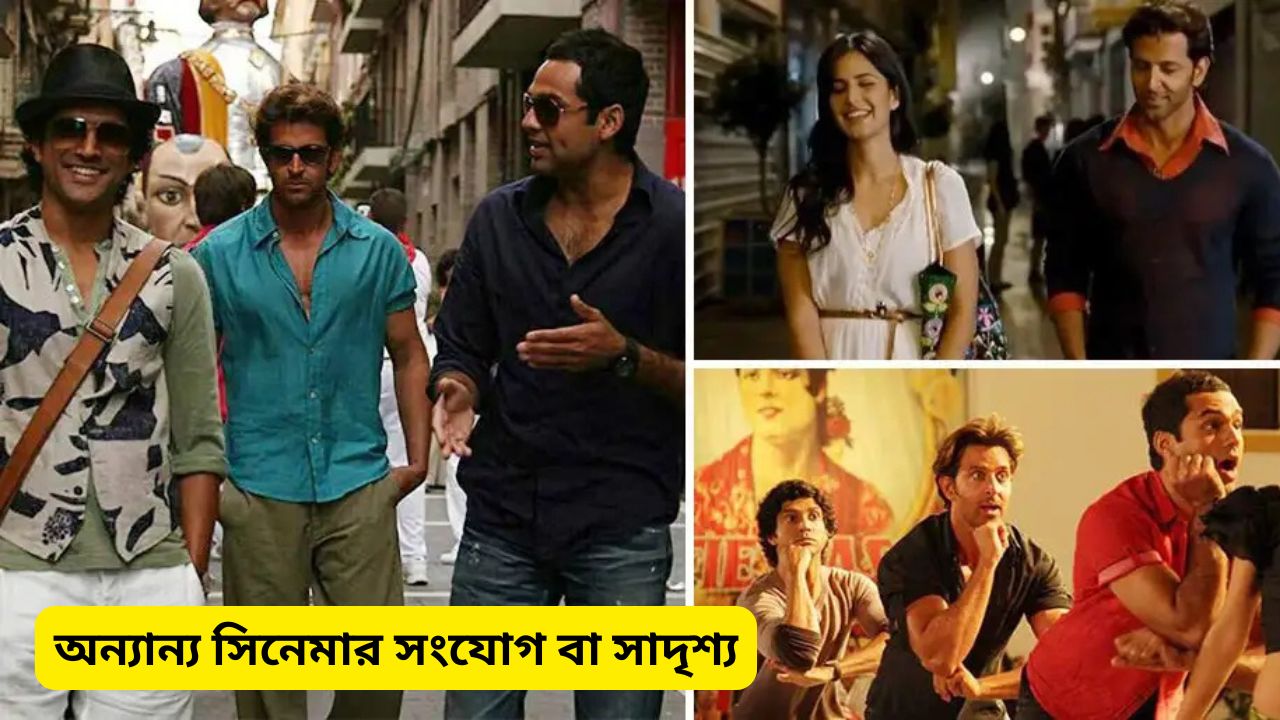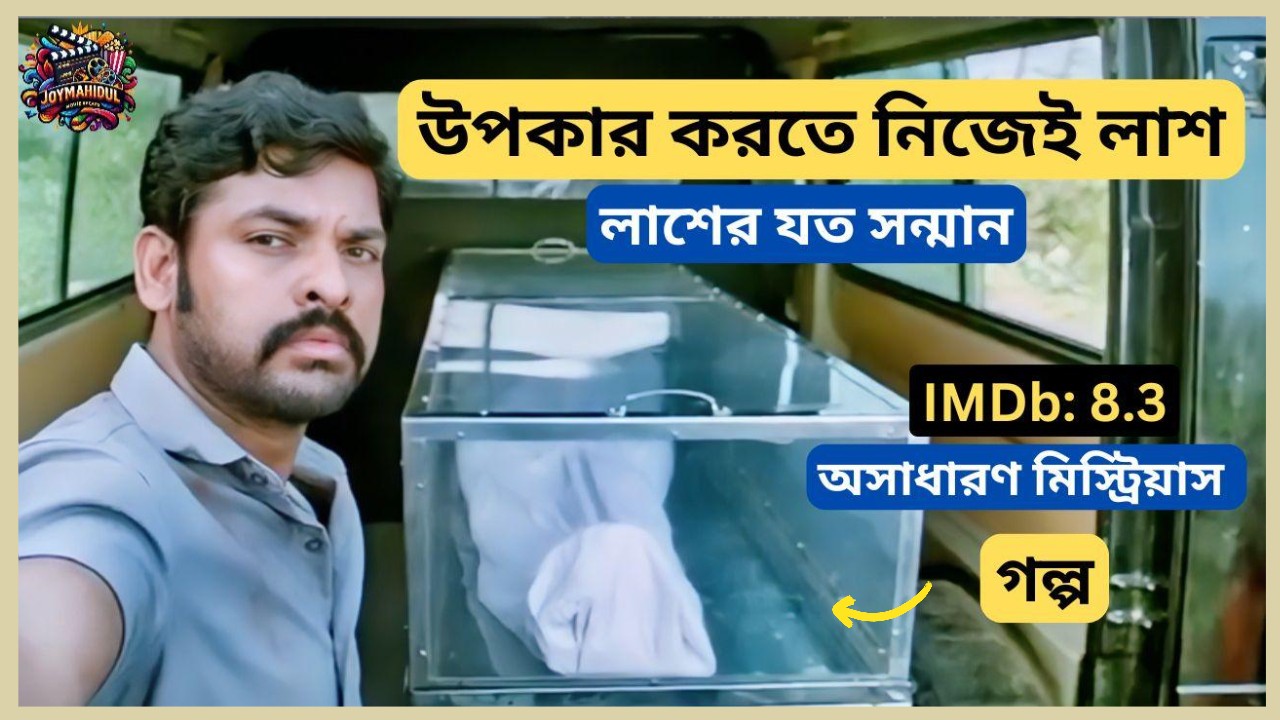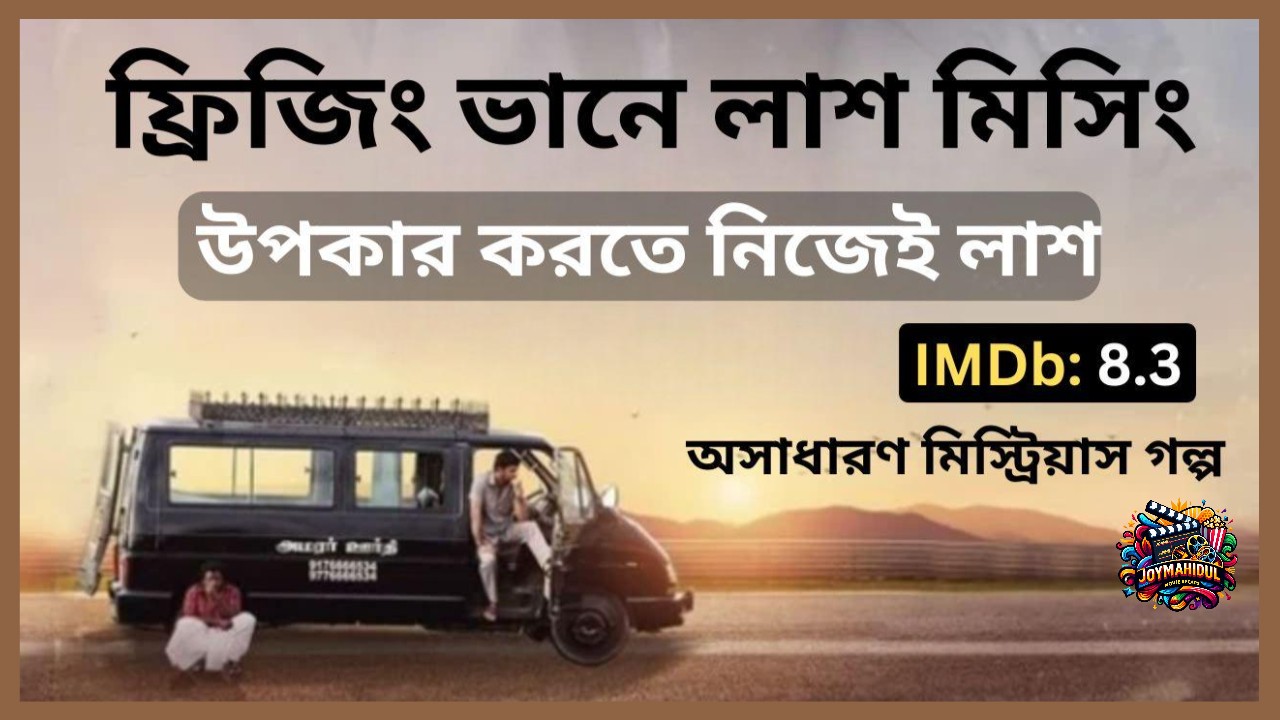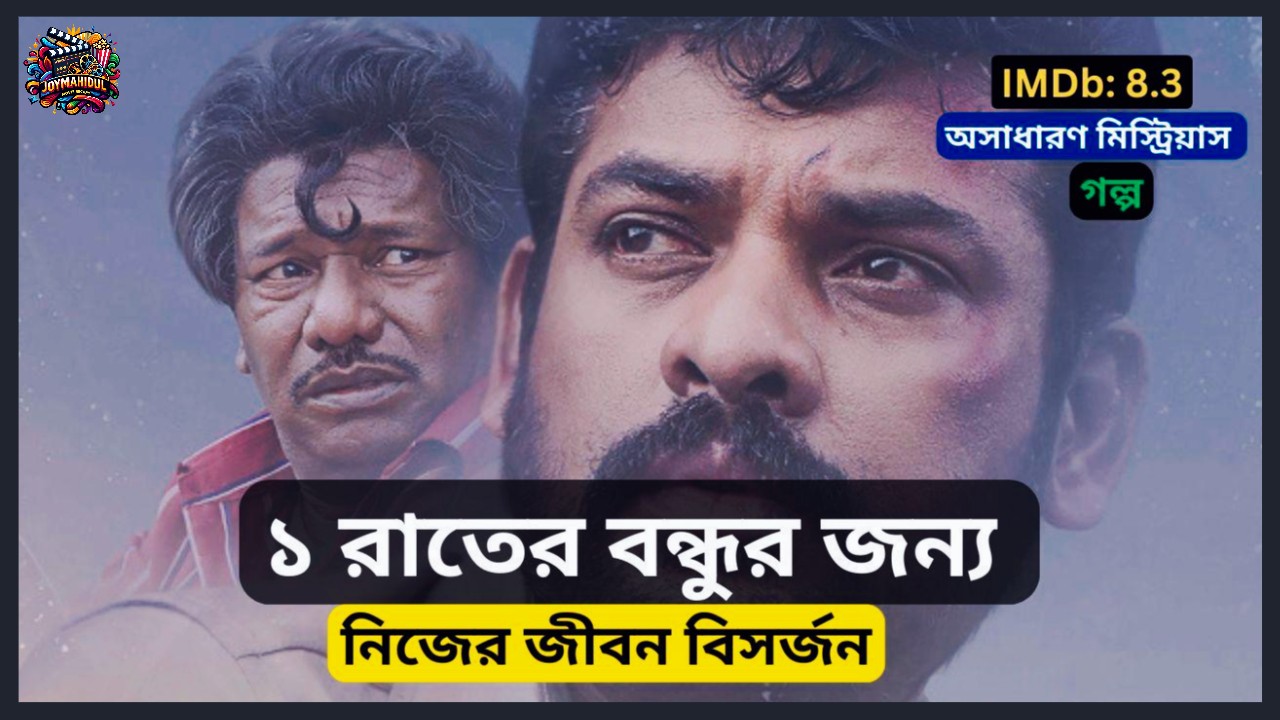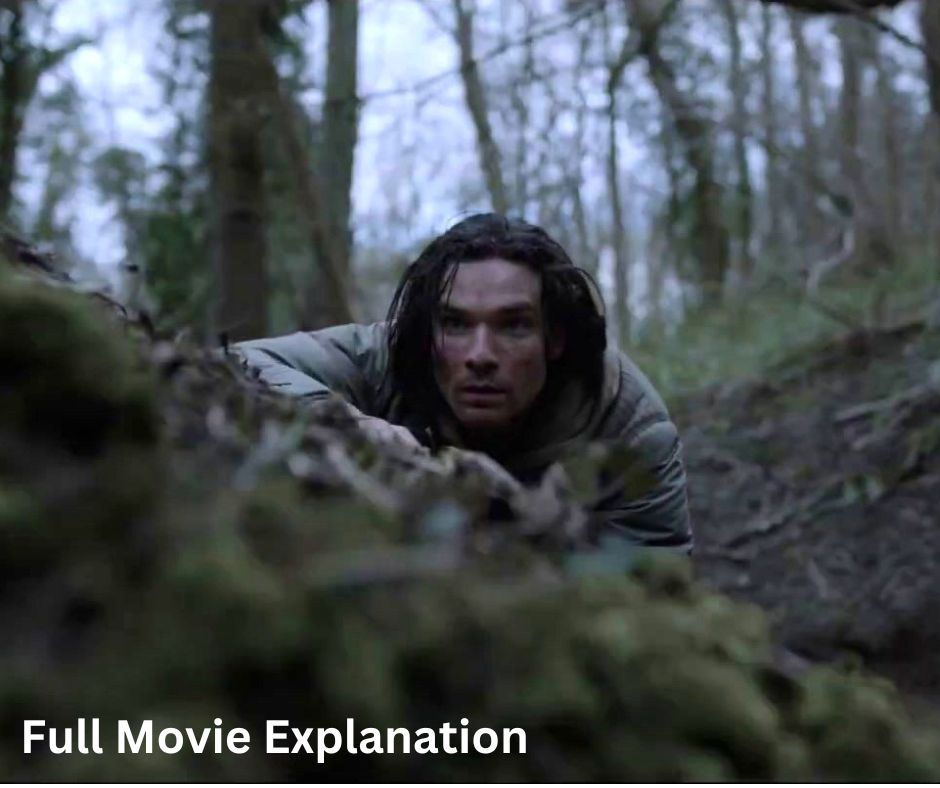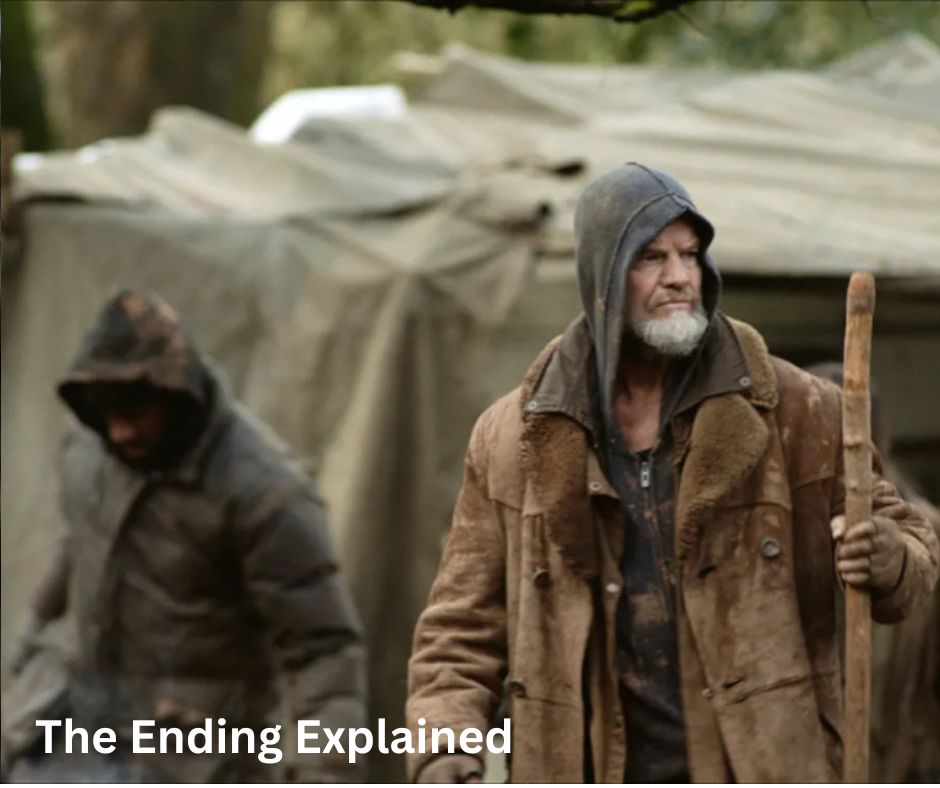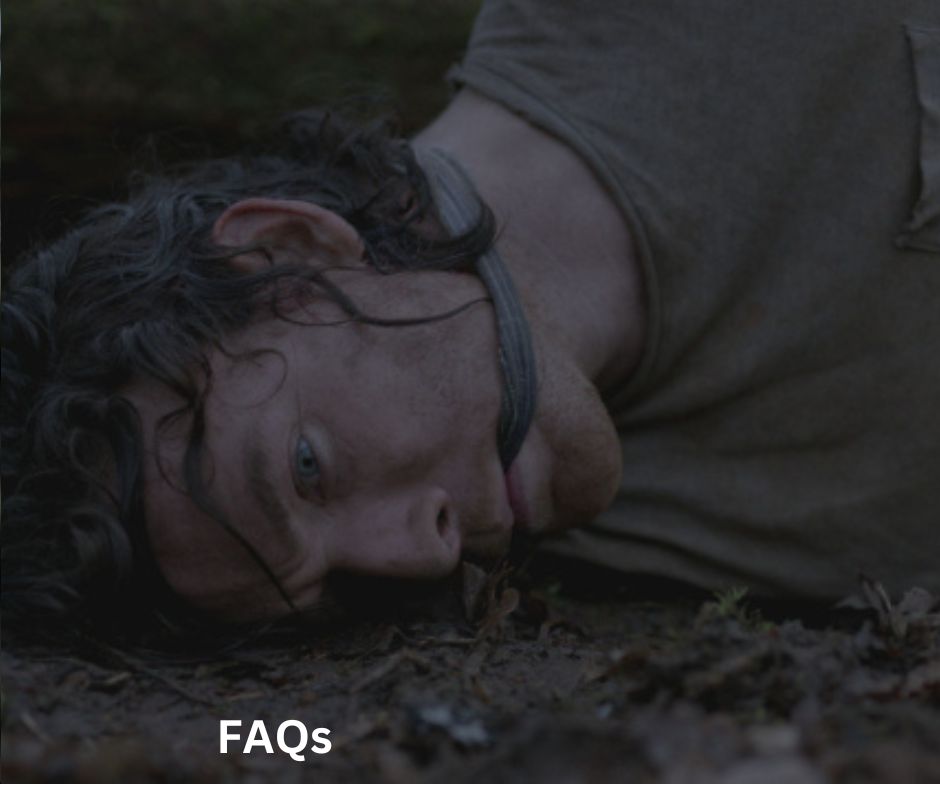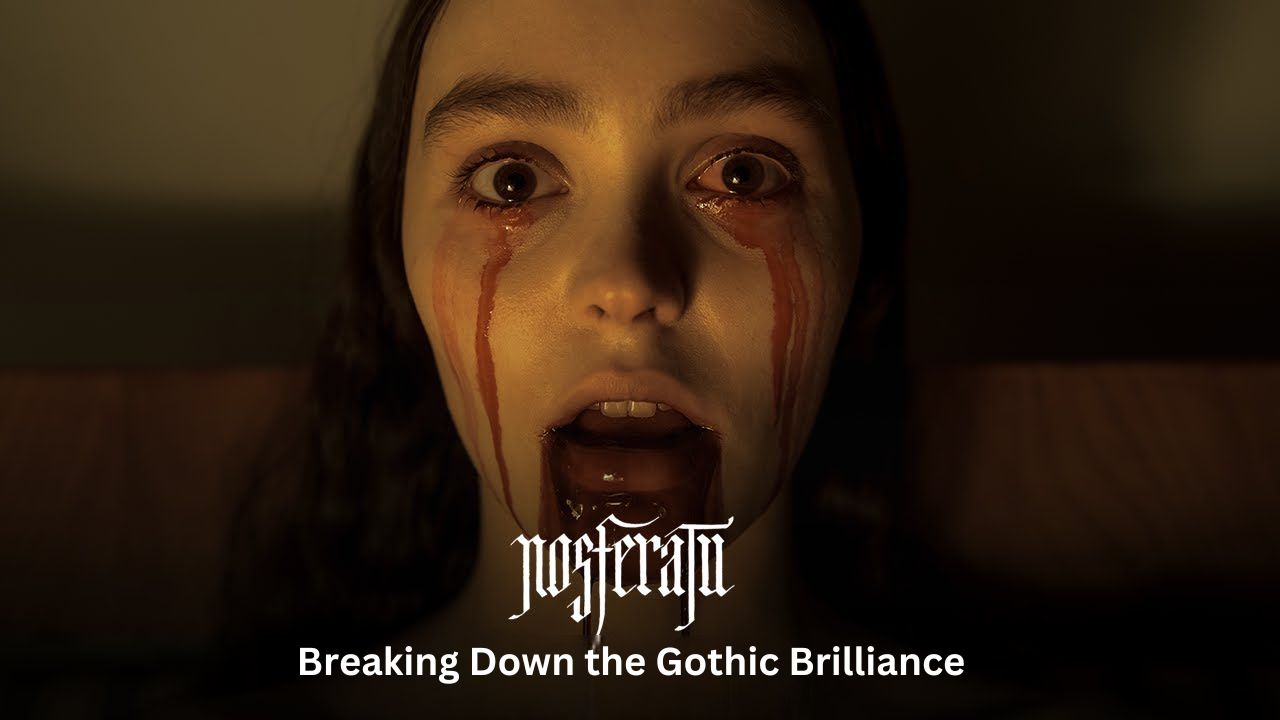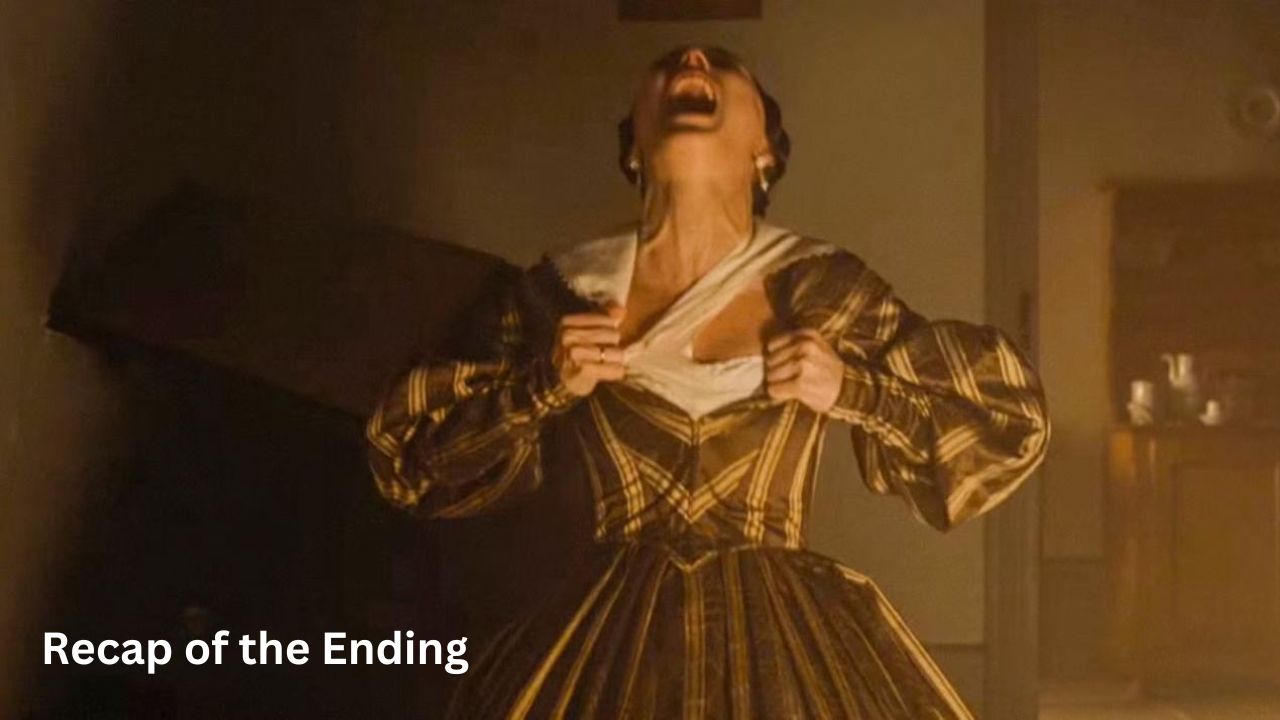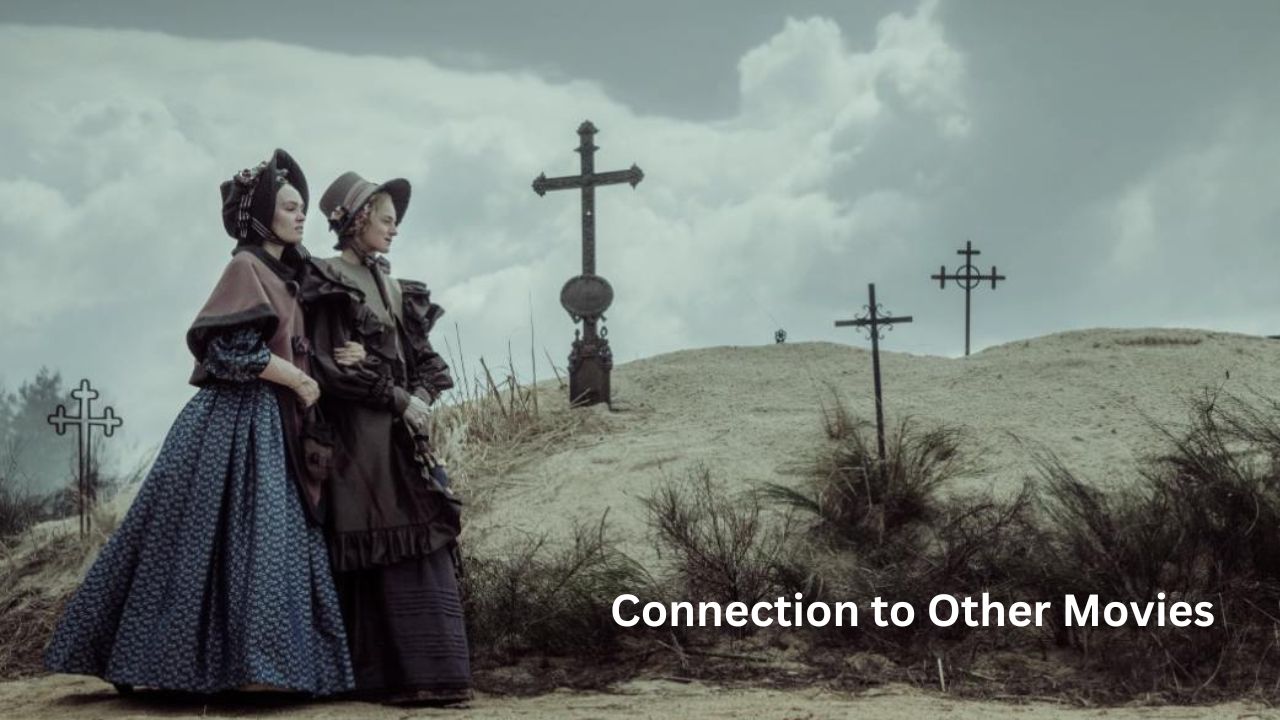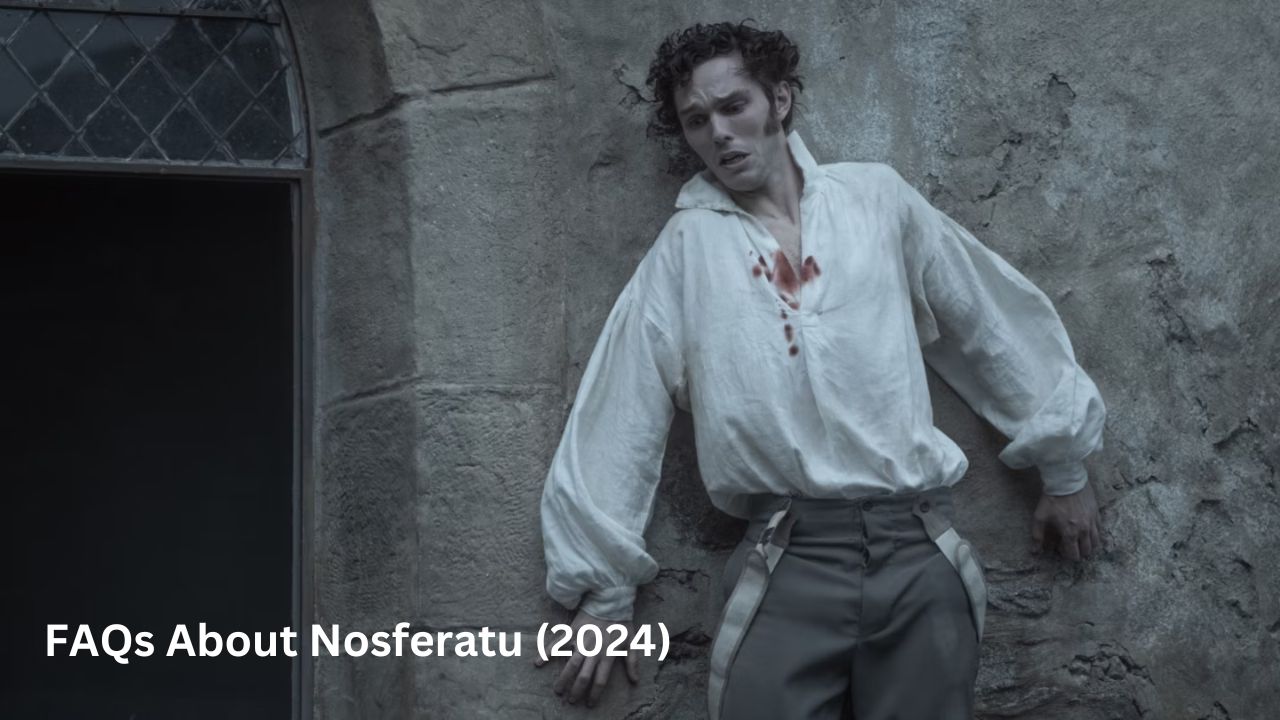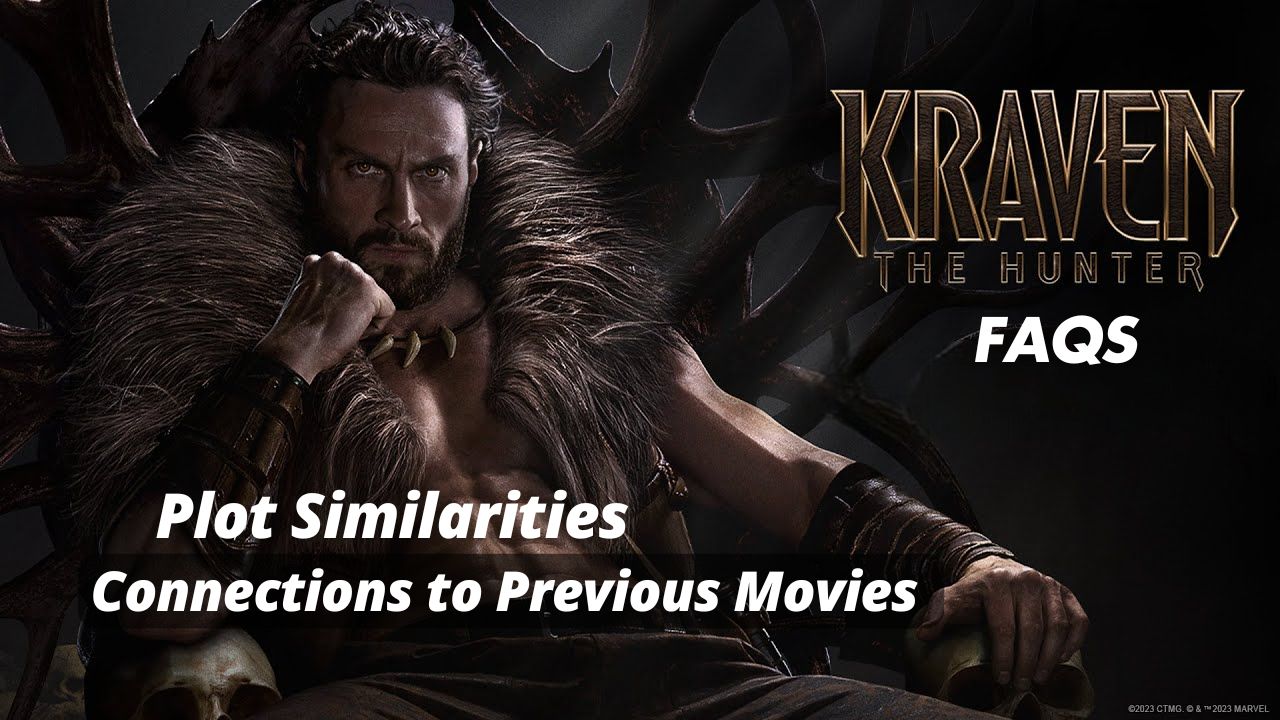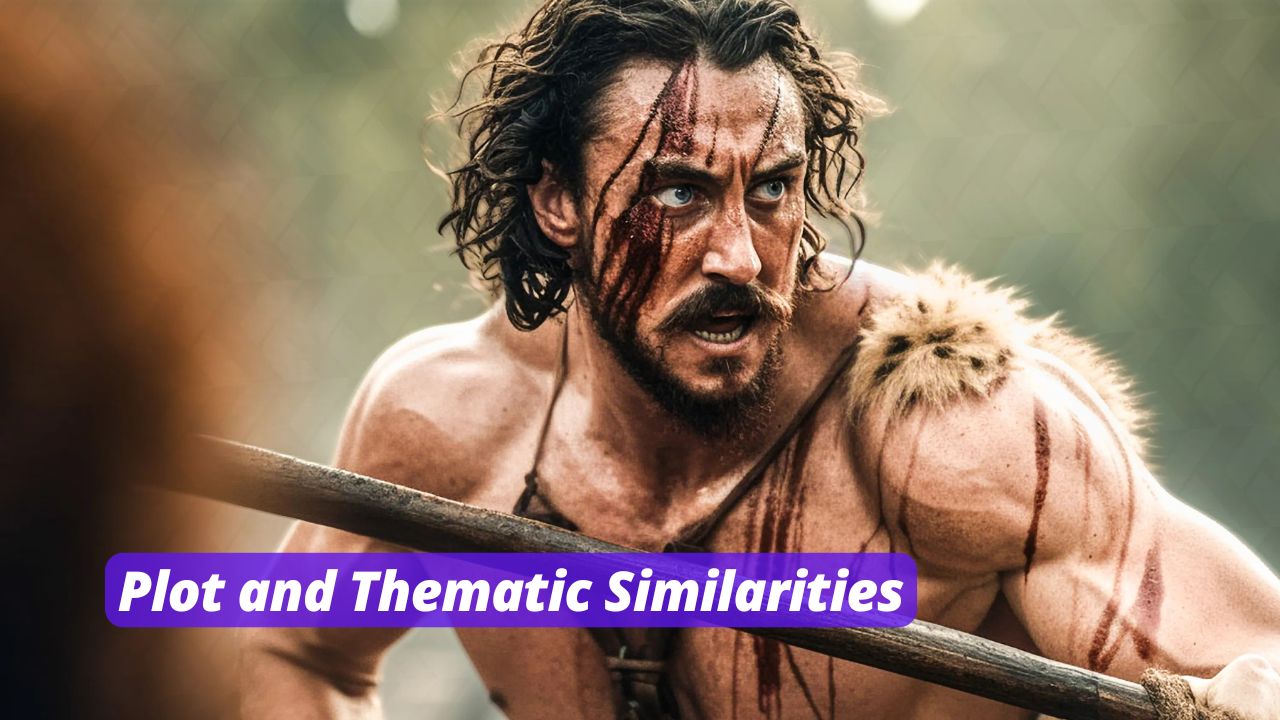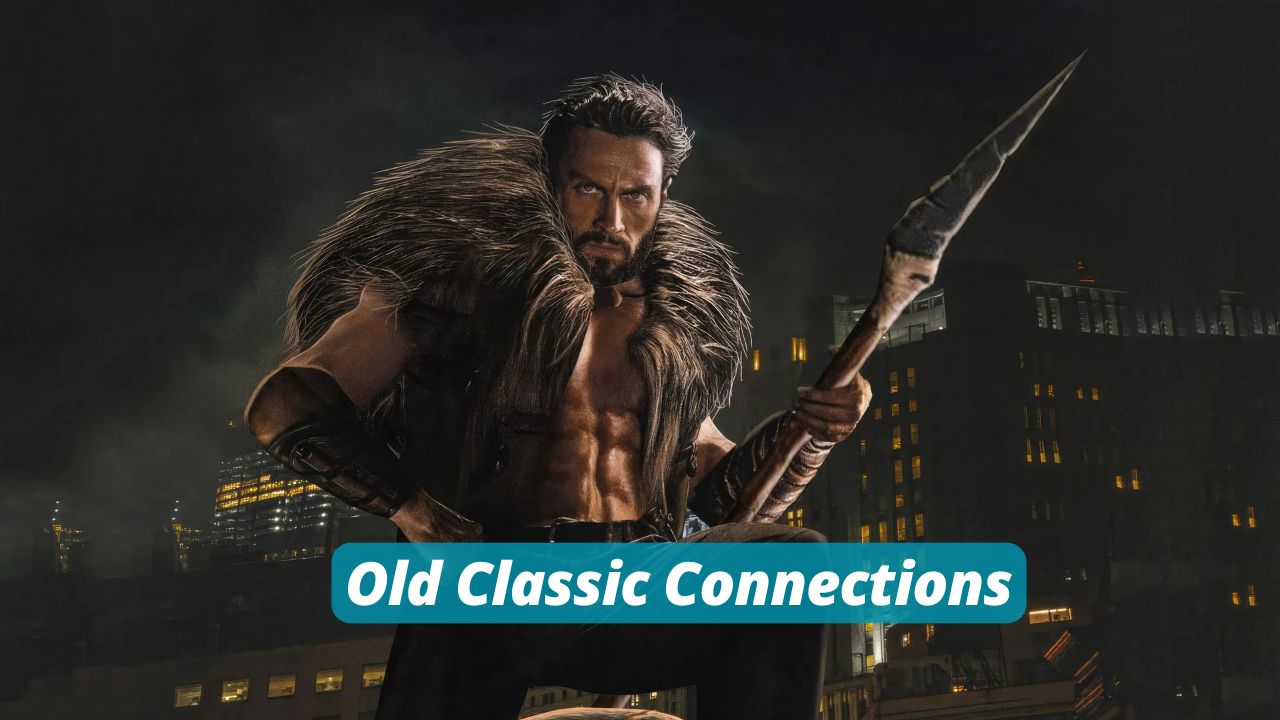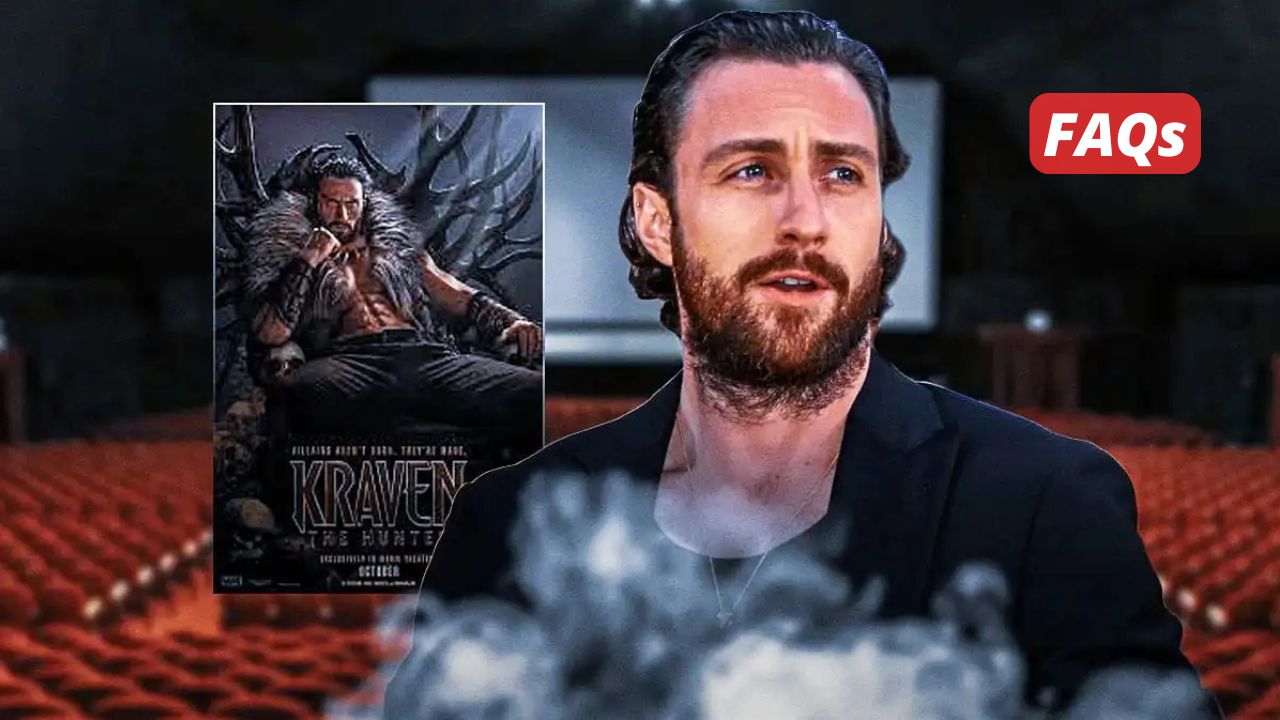গার্লস উইল বি গার্লস একটা মেয়ের জীবনের জটিলতা, প্রেম, এবং মা মেয়ের সম্পর্ক মুভির লুকানো বার্তা ও গভীর সম্পর্কের কাহিনী জানতে এক নজরে দেখুন!
ভূমিকা (Introduction)
Girls Will Be Girls একটি হৃদয়স্পর্শী ‘কামিং-অব-এজ’ ড্রামা, যা ২০২৪ সালে মুক্তি পায়। শুচি তালাটির পরিচালিত এই সিনেমাটি একটা মেয়ের জীবনের জটিলতা, প্রেম, এবং পারিবারিক সম্পর্ক নিয়ে একটি শক্তিশালী গল্প তুলে ধরেছে। হিমালয়ের পাদদেশে অবস্থিত একটি বোর্ডিং স্কুলকে কেন্দ্র করে নির্মিত এই চলচ্চিত্রে, প্রধান চরিত্র মীরা তার জীবন ও অনুভূতিগুলোর গভীরে প্রবেশ করে। এটি Sundance Film Festival-এ প্রশংসিত হয়েছে এবং ১৮ ডিসেম্বর, ২০২৪-এ Amazon Prime Video-তে মুক্তি পেয়েছে এই সিনেমা।
এই সিনেমাটি বিশেষত মেয়েদের অভিজ্ঞতাগুলোকে সুনিপুণভাবে তুলে ধরে। মুভির প্রতিটি অংশে দেখা যায় আন্তরিকতা, যা সিনেমার গভীরতাকে বাড়িয়ে তোলে। আপনি যদি একটি অর্থবহ এবং আবেগপ্রবণ গল্প খুঁজছেন, তাহলে এটি হতে পারে আপনার জন্য আদর্শ একটি সিনেমা।
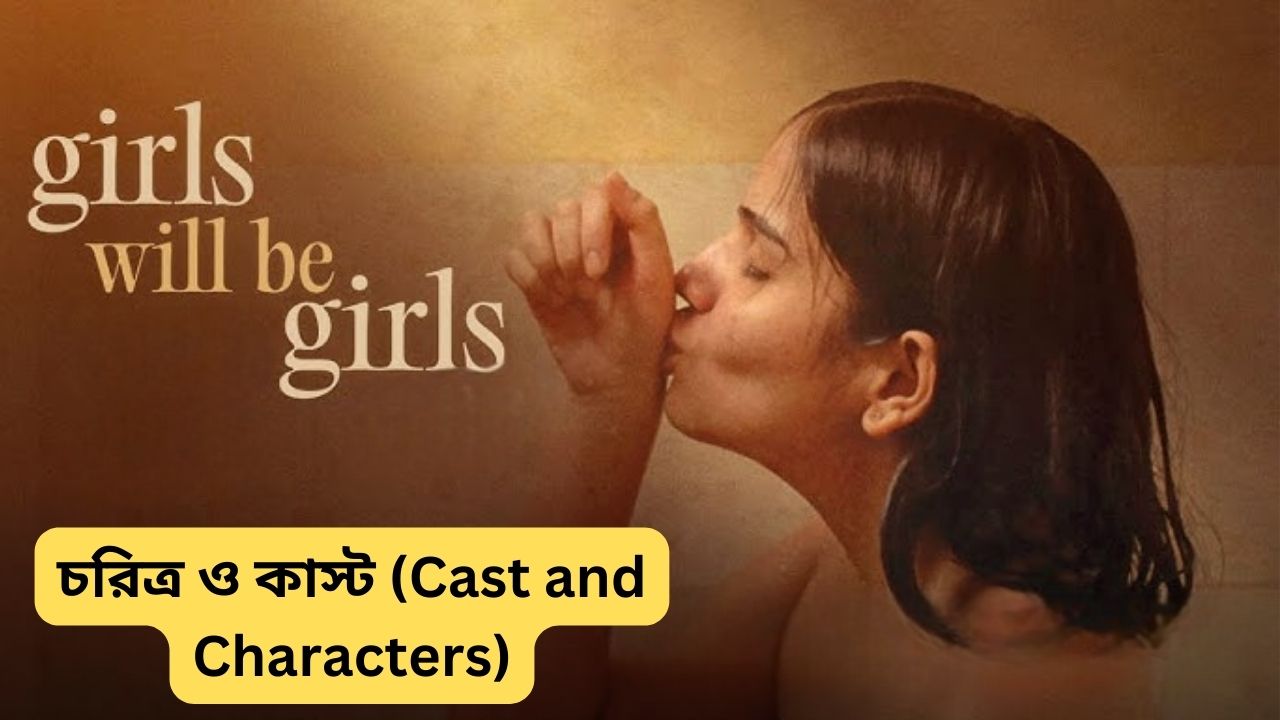
চরিত্র ও কাস্ট (Cast and Characters)
এই মুভির প্রধান চরিত্র ও তাদের পারফরম্যান্স:
- প্রীতি পানিগ্রাহী (মীরা কিশোর): এক উজ্জ্বল এবং সাহসী কিশোরী মীরা তার স্কুলের কাপ্টেন।
- কেশব বিনয় কিরণ (শ্রীনিবাস): এক আকর্ষণীয় নতুন ছাত্র সে হংকং থেকে এসেছে।
- কানি কুসরুতি (অনিলা): মীরার রক্ষণশীল কিন্তু মমতাময়ী মা খুব মিশুক।
- কাজল চুঘ (প্রিয়া): মীরার শ্রেণিকক্ষের বন্ধু বলা চলে একজনই বান্ধবী।
প্রত্যেক অভিনেতা তাদের চরিত্রে গভীরতা এনেছেন, যা মুভিকে আরো প্রাণবন্ত করেছে।
প্লট সারাংশ বা গল্পের সংক্ষেপ (Plot Summary)
মুভির গল্প শুরু হয় মীরা কিশোরের স্কুলের প্রথম নারী হেড প্রিফেক্ট হওয়ার মধ্য দিয়ে। তার এই অর্জনে গর্বিত হলেও, মীরার মা অনিলা সবসময় তাকে সঠিক পথে রাখার চেষ্টা করেন তবে মীরা তার মা কে পছন্দ করে না। মীরার জীবন নতুন মোড় নেয় যখন সে শ্রীনিবাস নামের এক নতুন ছাত্রের সাথে পরিচিত হয়। তাদের দুইজনের জ্যোতির্বিদ্যার প্রতি আকর্ষণ অনেক বেশি এবং এর মাধ্যমে তাদের সম্পর্ক গভীর হতে থাকে।
মীরার জীবনে সমস্যার সূত্রপাত হয় যখন শ্রীনিবাসের সাথে তার সম্পর্ক, প্রথম শারিরিক সম্পর্ক এবং স্কুলের দায়িত্ব পালনের মধ্যে ভারসাম্য বজায় রাখতে সে হিমশিম খায়। শ্রীনিবাসের প্রতি মীরার ভালোবাসা তাকে নতুন অভিজ্ঞতার মুখোমুখি করে তোলে, কিন্তু তার মা অনিলার অতিরিক্ত রক্ষণশীলতা তাদের সম্পর্ককে জটিল থেকে জটিল করে তোলে। মীরা যখন স্কুলে ছাত্রদের অসম্মানের মুখোমুখি হয় এবং একজন দায়িত্বশীল প্রধানের ভূমিকা পালন করতে গিয়ে ব্যর্থ হয়, তখন তার আত্মবিশ্বাস ভেঙে পড়ে আর সে নিজেকে চিনতে পারে।
এরই মধ্যে, মীরার মা অনিলা তার মেয়ের জীবনে শৃঙ্খলা আনতে চাইলেও বুঝতে পারেন যে মীরার নিজস্ব জগত এবং অনুভূতিগুলোকে প্রাধান্য দেওয়া জরুরি। গল্পে তাদের সম্পর্কের টানাপোড়েন মা-মেয়ের দ্বন্দ্বকে গভীরভাবে তুলে ধরে। শ্রীনিবাসের পরামর্শ এবং সহায়তায় মীরা ধীরে ধীরে তার জীবনের মানে খুঁজে পায় এবং এটি ও বুঝতে পারে শ্রী সবার সাথে একভাবেই চলে সে তার কাছে অন্যরকম কেউ না।
গল্পের চূড়ান্ত পর্যায়ে, একটি বড় ঘটনার মাধ্যমে মীরা বুঝতে পারে যে তার মায়ের ভালোবাসা এবং স্নেহ তার জীবনের একটি গুরুত্বপূর্ণ অংশ যা সে এতদিন বুঝতে পারেনি। অনিলা যখন তার মেয়ের পাশে দাঁড়ান, তখন তাদের সম্পর্ক একটি নতুন মাত্রা পায়। শেষ দৃশ্যে মীরা তার মায়ের চুলে তেল দিচ্ছে, যা তাদের সম্পর্ক গভীর করে তোলে। এই আবেগঘন সমাপ্তি মা-মেয়ের সম্পর্কের জটিলতা এবং ভালোবাসার সৌন্দর্যকে তুলে ধরে।
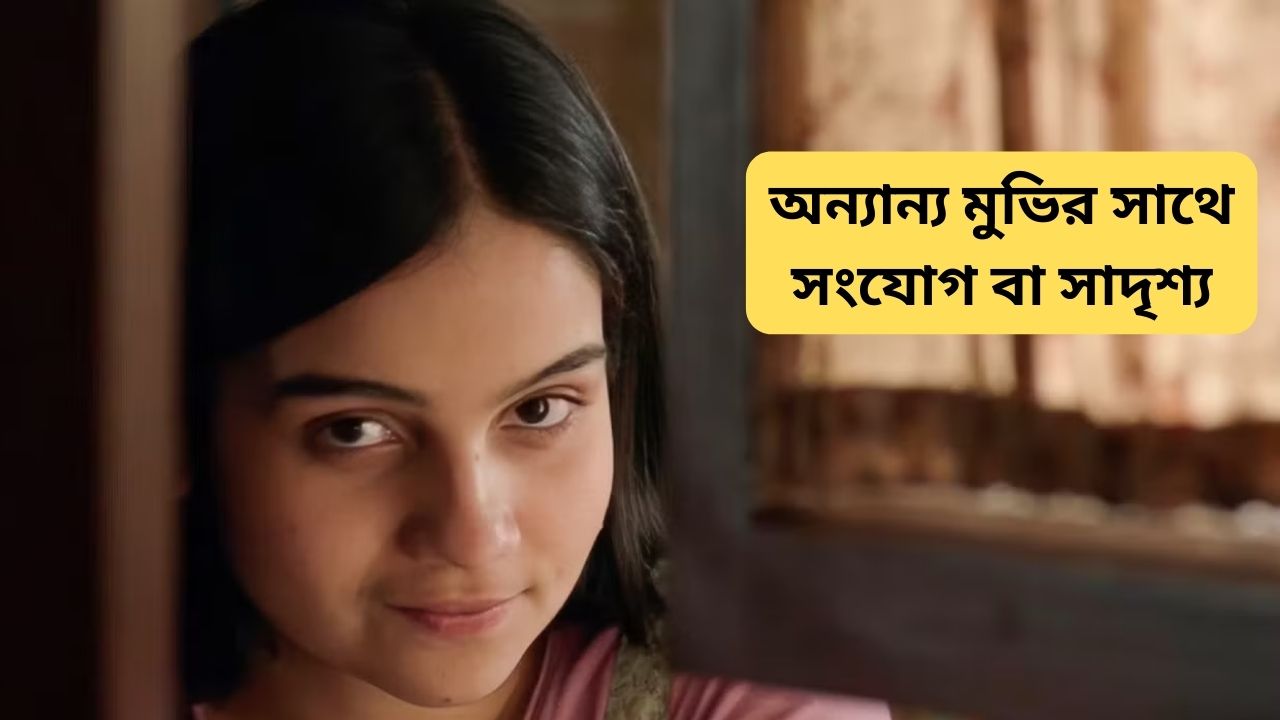
অন্যান্য মুভির সাথে সংযোগ বা সাদৃশ্য (Connection to Other Movies)
Lady Bird এবং Girls Will Be Girls উভয়ই মা-মেয়ের সম্পর্কের জটিলতা নিয়ে আলোচনা করে। Lady Bird-এ প্রধান চরিত্র ক্রিস্টিন এবং তার মায়ের মধ্যে দ্বন্দ্ব এবং ভালোবাসার সম্পর্ক যেমন একে অপরকে বুঝতে শেখায়, তেমনই এই সিনেমায় মীরা এবং অনিলার সম্পর্কের দ্বন্দ্ব এবং পুনর্মিলন গল্পের কেন্দ্রীয় বিষয়। Girls Will Be Girls হিমালয়ের পাদদেশে একটি বোর্ডিং স্কুলে সেট হলেও, এর আবেগ এবং পারিবারিক সম্পর্কের কাহিনী সার্বজনীন। Lady Bird এবং Girls Will Be Girls এর মধ্যে আরও একটি মিল হলো, উভয় সিনেমায় প্রধান চরিত্রের জীবনের ছোট ছোট মুহূর্তগুলোকে গভীর সংবেদনশীলতার সাথে চিত্রিত করা হয়েছে। যেমন মীরার জ্যোতির্বিদ্যায় শ্রীনিবাসের প্রতি আকর্ষণ বা তার মায়ের সাথে একান্ত মুহূর্তগুলো। এই ধরনের দৃশ্যগুলো দর্শকদের মুভির সাথে আরও সংযুক্ত হতে সাহায্য করে।
Little Women সিনেমার মতো, এটি নারীদের জীবন, তাদের আবেগ এবং সামাজিক চ্যালেঞ্জগুলোকে তুলে ধরে। দুই সিনেমাতেই নারীদের আত্ম-আবিষ্কার এবং স্বাধীনতার জন্য সংগ্রামের গল্প পাওয়া যায়। Girls Will Be Girls-এ মীরার চরিত্রটি এমন একটি কিশোরীর প্রতীক, যে নিজের জীবনের লক্ষ্য এবং ভালোবাসা খুঁজে বের করার চেষ্টা করছে, যা Little Women মুভির জো মার্চের চরিত্রের সাথে তুলনীয়।

Eighth Grade এর মতো মুভি, যেখানে কিশোর-কিশোরীদের আবেগ এবং আত্ম-পরিচয়ের অনুসন্ধান গভীরভাবে চিত্রিত হয়েছে। তবে, Girls Will Be Girls তার অনন্য ভারতীয় সাংস্কৃতিক প্রেক্ষাপট এবং স্থানীয় চরিত্রগুলোর মাধ্যমে এই জঁরায় একটি নতুন দৃষ্টিভঙ্গি যোগ করেছে।
কিছু দিক থেকে, এই মুভিটি ভারতীয় সিনেমা The Sky is Pink এর সাথেও তুলনীয়, যেখানে একটি পরিবারের আবেগঘন গল্প এবং মা-মেয়ের সম্পর্কের বিভিন্ন স্তর চিত্রিত হয়েছে। Girls Will Be Girls সিনেমার বিশেষত্ব হলো এটি এই ধরনের গল্পগুলোকে একটি নিরবিচ্ছন্ন এবং বিশ্বজনীন প্রেক্ষাপটে উপস্থাপন করে।
অন্যদিকে, এই সিনেমাটি Call Me by Your Name এর মতো মুভির সাথেও তুলনীয়, যেখানে প্রথম প্রেম এবং আবেগের জটিলতাগুলো তুলে ধরা হয়েছে। মীরা এবং শ্রীনিবাসের সম্পর্কের অনিশ্চয়তা এবং আবেগের গভীরতা এই ধরনের মুভির সাথেও সাদৃশ্যপূর্ণ। এই সব মুভির সাথে Girls Will Be Girls এর সাদৃশ্য থাকলেও, এটি তার নিজস্ব গল্প এবং উপস্থাপনার মাধ্যমে একটি আলাদা পরিচিতি তৈরি করেছে। এটি দেখিয়ে দেয় যে কিভাবে একটি স্থানীয় গল্প আন্তর্জাতিকভাবে সম্পর্ক স্থাপন করতে পারে এবং দর্শকদের মন জয় করতে পারে।
Girls Will Be Girls সিনেমার ভারতীয় মালায়ালম এবং তামিল সিনেমার সাথে কিছু মিল খুঁজে পাওয়া যায়, বিশেষত সেই সিনেমাগুলোর সাথে যেখানে মা-মেয়ের সম্পর্ক এবং আত্ম-আবিষ্কারের গল্প প্রধান ভূমিকা পালন করে। উদাহরণস্বরূপ:
36 Vayadhinile (2015)
এই সিনেমাটি একজন নারীর আত্ম-পরিচয়ের গল্প তুলে ধরে, যেখানে একজন মা তার জীবন নতুন করে শুরু করার জন্য চ্যালেঞ্জ গ্রহণ করে। Girls Will Be Girls-এর মীরা এবং অনিলার সম্পর্কের মতো, এই সিনেমাতেও পারিবারিক সম্পর্ক এবং একটি নারীর ব্যক্তিগত প্রবৃদ্ধির উপর জোর দেওয়া হয়েছে।
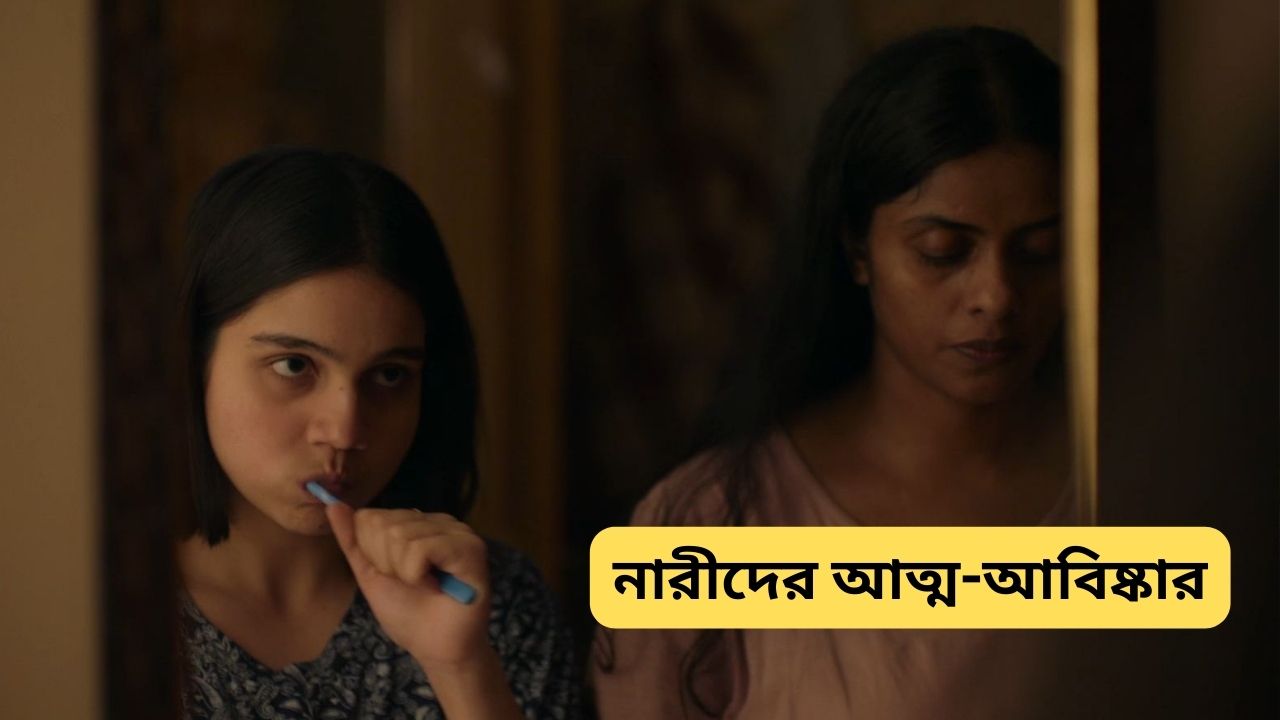
Kannathil Muthamittal (2002)
মা-মেয়ের সম্পর্কের আবেগময় জটিলতাগুলো এখানে ফুটিয়ে তোলা হয়েছে। Girls Will Be Girls এবং এই সিনেমা উভয়ই দেখায় কিভাবে পরিবার এবং ভালোবাসা একজন ব্যক্তির জীবনকে প্রভাবিত করে।
Uyare (2019)
মালায়ালম সিনেমা Uyare নারীর ক্ষমতায়ন এবং চ্যালেঞ্জ গ্রহণের গল্প তুলে ধরে। মীরার মতো, Uyare-এর প্রধান চরিত্রও কঠিন পরিস্থিতির মধ্য দিয়ে নিজের জায়গা তৈরি করে।
The Great Indian Kitchen (2021)
এটি নারীর দৈনন্দিন সংগ্রাম এবং সমাজে নিজের জায়গা তৈরির গল্প। যদিও গল্পের পরিবেশ আলাদা, দুটি সিনেমাতেই নারীর আত্ম-উন্নয়নের দিকটি স্পষ্ট।
Secret Superstar (2017)
একটি কিশোরীর নিজের স্বপ্ন পূরণের জন্য সংগ্রাম এবং তার মায়ের সহায়তা এই সিনেমার প্রধান বিষয়। মীরার স্কুলজীবনের চ্যালেঞ্জ এবং তার মায়ের সাথে দ্বন্দ্ব এই সিনেমার সাথে সম্পর্কিত।
এই মিলগুলো দেখায় যে Girls Will Be Girls তার স্থানীয় সাংস্কৃতিক প্রেক্ষাপটে থেকেও সার্বজনীন বার্তা বহন করে। এই সিনেমাগুলোর মধ্যে অনুরূপ দিকগুলো বিশ্বব্যাপী দর্শকদের কাছে সম্পর্কিত সিনেমা এবং প্রাসঙ্গিক মনে হতে পারে।
বাজেট ও আয় (Budget and Income)
“Girls Will Be Girls” মুভিটি মাত্র ২.৫ মিলিয়ন ডলার বাজেটে নির্মিত হয়েছিল। এটি ২০২৪ সালের Sundance Film Festival-এ প্রিমিয়ার করার পর ব্যাপক প্রশংসা অর্জন করে। মুভিটি Amazon Prime Video-তে মুক্তির পর এবং আন্তর্জাতিক ফিল্ম ফেস্টিভালগুলোর অংশগ্রহণের মাধ্যমে ১০ মিলিয়ন ডলারেরও বেশি আয় করে।
এটি দেখিয়েছে যে একটি মুভি সফল হতে বড় বাজেটের প্রয়োজন নেই। বরং, একটি প্রভাবশালী গল্প, দক্ষ পরিচালনা, এবং অনবদ্য অভিনয়-ই দর্শকদের মন জয় করতে যথেষ্ট। শুচি তালাটি-এর নির্দেশনা এবং প্রীতি পানিগ্রাহী ও কেশব বিনয় কিরণের অসাধারণ অভিনয় এই মুভিটিকে শুধুমাত্র আর্থিকভাবে সফল নয়, বরং সমালোচকদের কাছেও বিশেষ স্থান করে দিয়েছে।
এই মুভি আমাদের মনে করিয়ে দেয় যে মেধা এবং গল্প বলার দক্ষতাই সিনেমার আসল শক্তি।
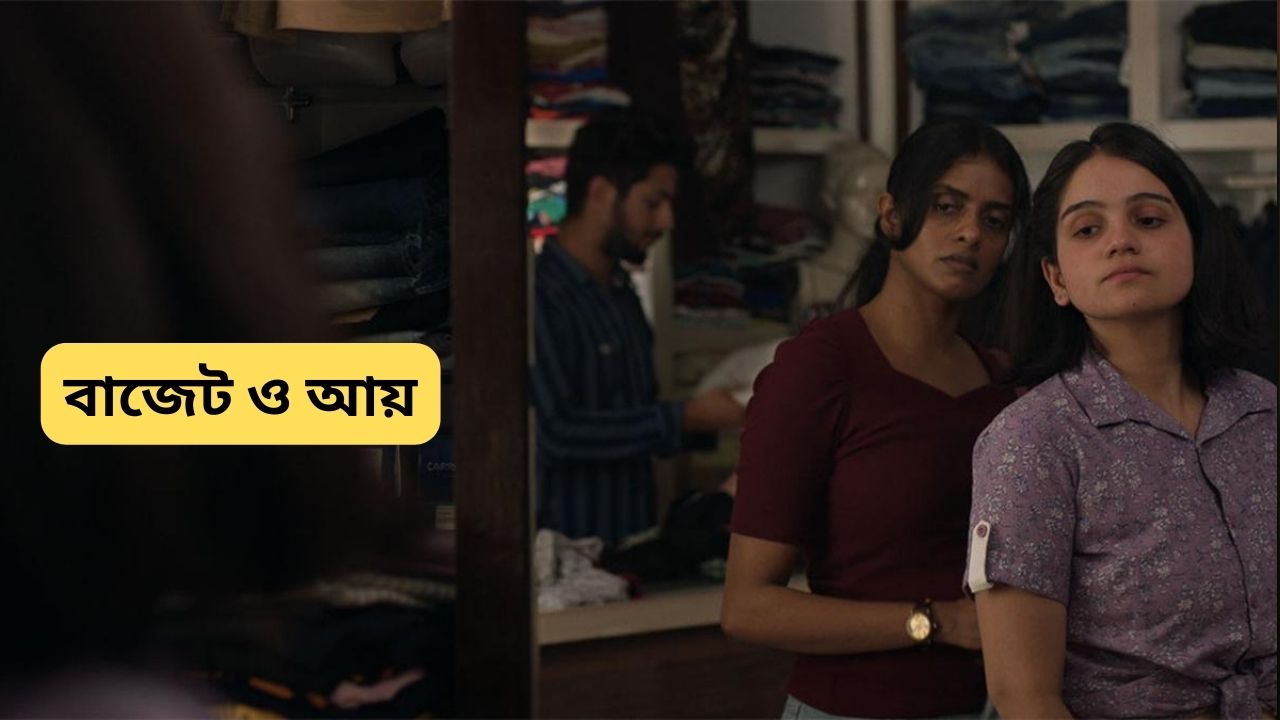
গুরুত্বপূর্ণ খবর, খারাপ রিভিউ, এবং উত্তেজনাপূর্ণ তথ্য
গুরুত্বপূর্ণ খবর:
“Girls Will Be Girls” মুভির অন্যতম আকর্ষণীয় দিক ছিল এর নির্মাণ প্রক্রিয়া। পুরো কাজটি পরিচালিত হয়েছিল একটি নারী-নির্ভর দল দ্বারা। পরিচালক শুচি তালাটি জানিয়েছেন, তারা একটি নিরাপদ এবং সহযোগিতামূলক কাজের পরিবেশ নিশ্চিত করতে চেয়েছিলেন, যেখানে “মেয়েরা মেয়েদের মতো হতে পারে।” এটি নারী ক্ষমতায়নের একটি অনন্য উদাহরণ।
খারাপ রিভিউ:
তবে, এই মুভিটি কিছু মিশ্র প্রতিক্রিয়া পেয়েছে। সমালোচকদের একটি অংশ মনে করেছেন, মুভির দ্বিতীয় অংশের গতি কিছুটা ধীর হয়ে পড়ে, যা দর্শকদের সংযোগ কিছুক্ষণের জন্য বিচ্ছিন্ন করতে পারে। যদিও গল্পের গভীরতা এবং চরিত্রগুলোর সূক্ষ্ম প্রকাশ এই সীমাবদ্ধতাকে ছাপিয়ে গেছে।
উত্তেজনাপূর্ণ তথ্য:
এই মুভিটি ২০২৪ সালের Sundance Film Festival-এ অংশগ্রহণ করে এবং দুইটি উল্লেখযোগ্য পুরস্কার জিতে নেয়। এটি World Cinema Drama Audience Award এবং Special Jury Award for Acting পুরস্কারে ভূষিত হয়। মুভির অভিনয়শিল্পী এবং গল্প বলার ভঙ্গি বিশ্বব্যাপী সমালোচকদের কাছে প্রশংসিত হয়েছে।
মুভিটি প্রমাণ করে, একটি সাহসী গল্প এবং শক্তিশালী নির্মাণশৈলী বিশ্বমঞ্চে কেমন প্রভাব ফেলতে পারে।
রেটিংস (Ratings)
- Rotten Tomatoes: ১০০% (৫১ রিভিউ)
- Metacritic: ৭৯/১০০
- IMDb: ৭.১/১০
- আমার রেটিং: ৯/১০ (গভীর আবেগপূর্ণ গল্পের জন্য)।
কেন দেখবেন?
“Girls Will Be Girls” মুভিটি প্রেম, পরিচয়, এবং পারিবারিক সম্পর্কের একটি মর্মস্পর্শী গল্প। এটি কেবল একটি কাহিনি নয়; এটি এমন এক আবেগঘন যাত্রা যেখানে আপনি নিজেকে হারিয়ে ফেলবেন।
মুভিটি আমাদের নিয়ে যায় একজন কিশোরী মেয়ের জীবনের জটিল অধ্যায়ে, যেখানে সে প্রথম প্রেমের স্বাদ পায় এবং তার মায়ের সঙ্গে সম্পর্কের নতুন রূপ আবিষ্কার করে। এটি শুধুমাত্র মজাদার এবং হৃদয়গ্রাহী নয়, বরং সমাজের গভীর সমস্যাগুলোও তুলে ধরে, যেমন নারী-পুরুষের প্রতি বৈষম্য এবং কিশোরী মেয়েদের সংগ্রাম।
Sundance Film Festival-এ দুটি পুরস্কার জয় করে, মুভিটি ইতিমধ্যে দর্শকদের মন জয় করেছে। প্রীতি পানিগ্রাহী এবং কানি কুসরুতি-র অনবদ্য অভিনয় আপনাকে পর্দায় আটকে রাখবে।
👉 আমার ভিডিও দেখতেও ভুলবেন না, যেখানে আমি পুরো মুভিটি বিস্তারিতভাবে ব্যাখ্যা করেছি। আপনার ভালো লাগলে আমার লিংক ব্যবহার করে মুভিটি দেখে নিন এবং নতুন অভিজ্ঞতা উপভোগ করুন। এই অনন্য অভিজ্ঞতা পেতে এখনই Amazon Prime Video-তে “Girls Will Be Girls” দেখুন।
এই মুভি শুধু দেখবেনই না, নিজের আবেগের সঙ্গে সংযোগ খুঁজে পাবেন।
জনপ্রিয় প্রশ্নের মধ্যে ১০টি (10 Popular FAQs)
১. Girls Will Be Girls কী নিয়ে?
মুভিটি এক কিশোরী মেয়ের প্রেম, পরিচয়, এবং তার মায়ের সঙ্গে জটিল সম্পর্কের গল্প তুলে ধরে। এটি একটি হৃদয়স্পর্শী আসা-যাওয়ার গল্প।
২. এটি কে পরিচালনা করেছেন?
মুভিটি পরিচালনা করেছেন শুচি তালাটি। এটি তার প্রথম ফিচার ফিল্ম এবং নির্মাণে তিনি নারীদের ক্ষমতায়নের উপর জোর দিয়েছেন।
৩. মুভির প্রধান চরিত্র কারা?
মীরা চরিত্রে প্রীতি পানিগ্রাহী, শ্রীনিবাস চরিত্রে কেশব বিনয় কিরণ, এবং মীরার মা অনিলা চরিত্রে কানি কুসরুতি অভিনয় করেছেন।
৪. মুভিটি কোথায় শুট করা হয়েছে?
সিনেমাটি ভারতের উত্তরের পাহাড়ি এলাকা উত্তরাখণ্ড এবং দেরাদুনে শুট করা হয়েছে।
৫. মুভিটির বাজেট কত ছিল?
মাত্র ২.৫ মিলিয়ন ডলারের বাজেটে তৈরি মুভিটি দারুণ শিল্প এবং গল্প বলার ক্ষমতার প্রমাণ।
৬. Girls Will Be Girls কত আয় করেছে?
মুভিটি বিশ্বব্যাপী ১০ মিলিয়ন ডলারের বেশি আয় করে একটি ছোট বাজেটের সিনেমার বড় সফলতার উদাহরণ।
৭. এটি কোথায় দেখা যাবে?
মুভিটি বর্তমানে Amazon Prime Video-তে স্ট্রিমিংয়ের জন্য উপলব্ধ।
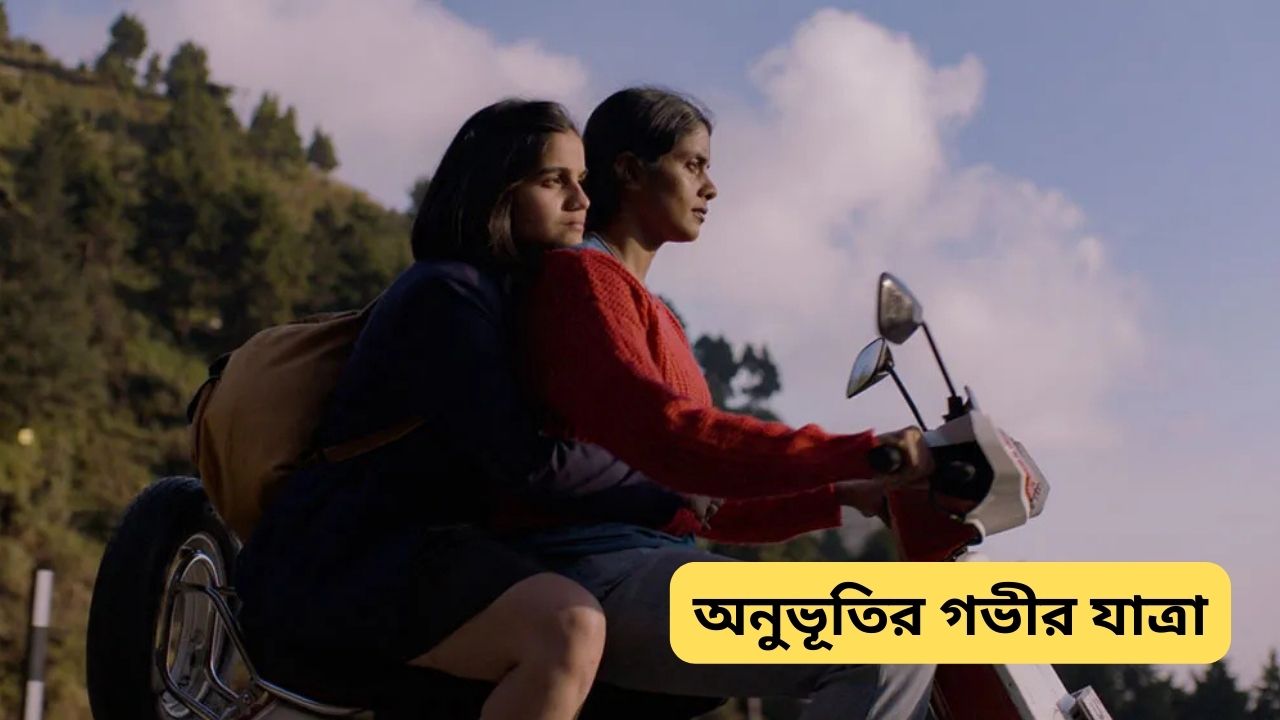
৮. মুভিটির বিশেষত্ব কী?
মুভিটি সম্পূর্ণ নারী-নির্ভর প্রোডাকশন টিম দ্বারা নির্মিত, যা চলচ্চিত্র নির্মাণে নারীদের ভূমিকা জোরালোভাবে তুলে ধরে।
৯. মুভিটি কোন ফেস্টিভালে দেখানো হয়েছে?
Sundance Film Festival-এ প্রিমিয়ার হওয়ার পাশাপাশি এটি Busan এবং MAMI Film Festival-এর মতো আন্তর্জাতিক ইভেন্টগুলোতেও দেখানো হয়েছে।
১০. মুভির বার্তা কী?
মুভিটি কিশোরী মেয়েদের আত্মপরিচয়, নারী ক্ষমতায়ন, এবং সম্পর্কের গভীরতা নিয়ে একটি ইতিবাচক এবং শিক্ষণীয় বার্তা প্রদান করে।
উপসংহার
“Girls Will Be Girls” শুধুমাত্র একটি সিনেমা নয়; এটি একটি অনুভূতির গভীর যাত্রা। মুভিটি মা-মেয়ের জটিল সম্পর্ক, প্রেমের প্রথম অভিজ্ঞতা, এবং সমাজের চাপের প্রভাবকে বাস্তবতার আলোকে তুলে ধরে।
এটি এমন একটি গল্প যা আমাদের জীবনের সম্পর্কগুলিকে নতুনভাবে ভাবতে শেখায়। শেষ দৃশ্যটি আবেগপূর্ণ এবং সন্তোষজনক, তবে আপনি কী মনে করেন, শেষটা অন্যভাবে হলে কেমন হতো? মীরা এবং তার মায়ের সম্পর্কের নতুন কোনো দিক কি দেখা যেত? শ্রীনিবাস কি ভিন্নভাবে প্রতিক্রিয়া দিতে পারত?
আপনার মতামত দিন:
মুভিটি দেখার পর আপনি যদি শেষ দৃশ্যটি নতুনভাবে চিন্তা করেন, তাহলে কীভাবে সেটা হতে পারত? আমাদের জানাতে ভুলবেন না।
